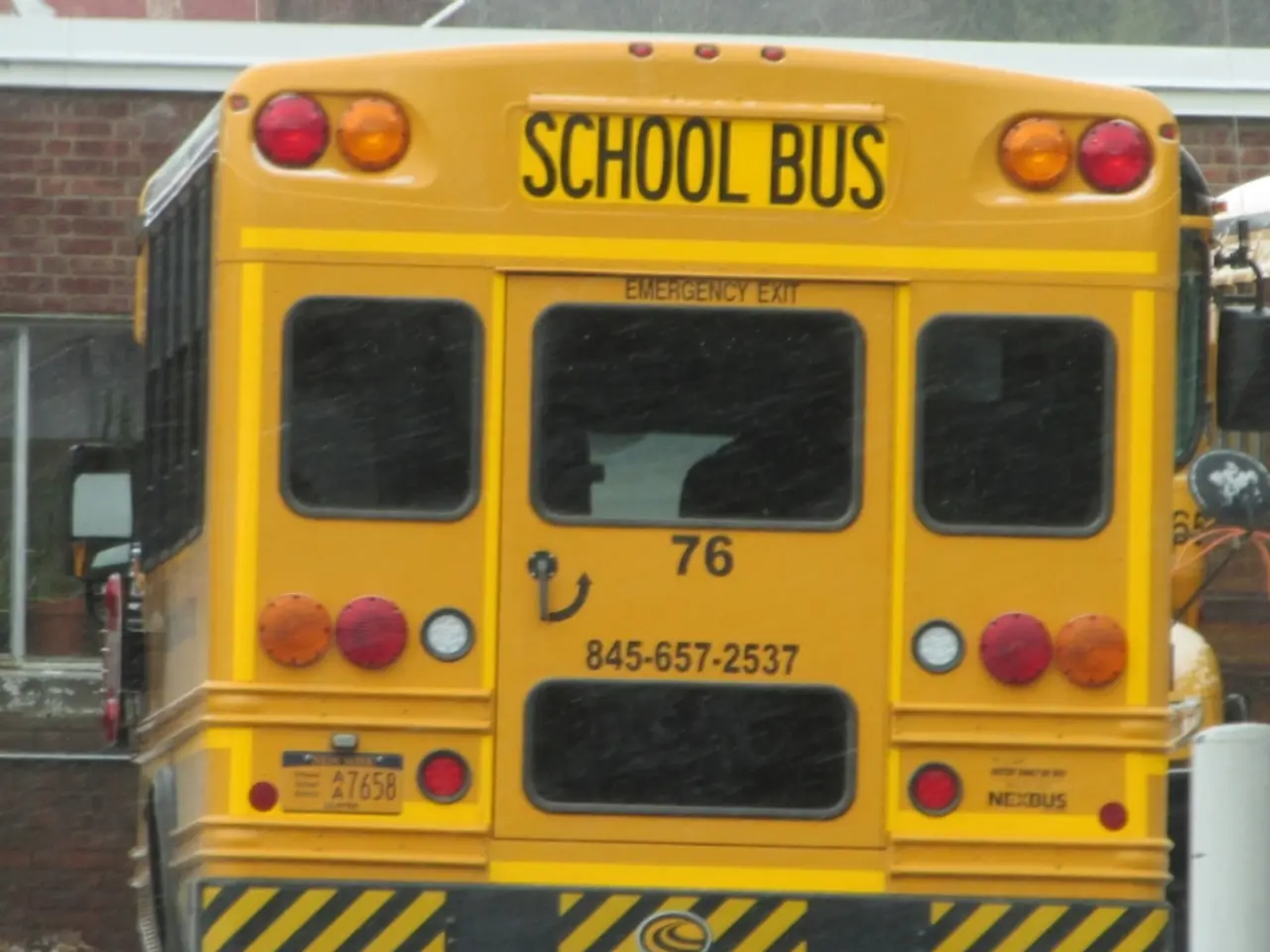Funding of $965 Million Allotted by Biden-Harris Administration for Clean School Buses
The United States Environmental Protection Agency (EPA) has announced the latest round of funding from the Clean School Bus Rebate Program, with up to $965 million available for school districts across the country. This fourth round of funding aims to further improve air quality in and around schools, reduce greenhouse gas pollution, and help accelerate America's leadership in developing clean vehicles.
School districts can use the funds to cover various costs, including those for buses and infrastructure, as well as eligible training costs for bus drivers, electricians, and other personnel working with the new buses or infrastructure. The EPA is committed to ensuring the program advances environmental justice and delivers on President Biden's Justice40 Initiative.
Applicants can request up to $325,000 per vehicle for up to 50 units per application. The electric school bus funding levels in this rebate program have been adjusted to stretch funding further and drive down long-term electric school bus costs.
The EPA is working closely with the Joint Office of Energy and Transportation (JOET) of the U.S. Department of Energy and U.S. Department of Transportation to provide school districts with support. Applicants and selectees can receive free technical assistance from JOET through resources such as one-on-one meetings and public webinars.
The EPA will prioritize applications that replace buses serving low-income, rural, and Tribal students. Large school districts with communities of concentrated poverty may also be prioritized if their application focuses on clean buses serving those communities.
Narrowing the cost difference between clean buses and diesel units remains an integral goal of the EPA Clean School Bus Program. Proactive and ongoing communication with key stakeholders such as school boards and local utilities is critical to successful bus and infrastructure deployment.
Workforce training is an eligible use of program funds, and the EPA encourages school districts to develop comprehensive workforce plans in partnership with their employees. The EPA and JOET are able to connect school districts with local utility providers to assist them in the infrastructure planning necessary for projects including battery-electric buses.
Under the Clean School Bus Program, the EPA has awarded almost $3 billion to fund approximately 8,700 bus replacements, with 95% being zero-emission, battery-electric. Funding has been awarded to nearly 1,300 school districts in nearly all 50 states and Washington D.C., along with several federally recognized Tribes and U.S. territories.
Applications for the Clean School Bus Rebate Program are due on the EPA online portal by 4 p.m. EST on January 9, 2025. However, as of now, no information is available about which school districts applied for the fourth round of the Clean School Bus Rebate Program in 2025 or the possibility of receiving up to $965 million for bus renewals.
The Biden-Harris Administration aims to transition nearly 500,000 school buses in America to cleaner technologies. Selectees may also be eligible for Inflation Reduction Act tax credits applicable to their bus and infrastructure purchases, worth up to $40,000 for qualifying school buses.
The U.S. Environmental Protection Agency encourages all eligible school districts to apply for the Clean School Bus Rebate Program to help reduce emissions, improve air quality, and contribute to America's leadership in clean transportation.
Read also:
- Peptide YY (PYY): Exploring its Role in Appetite Suppression, Intestinal Health, and Cognitive Links
- Toddler Health: Rotavirus Signs, Origins, and Potential Complications
- Digestive issues and heart discomfort: Root causes and associated health conditions
- House Infernos: Deadly Hazards Surpassing the Flames








